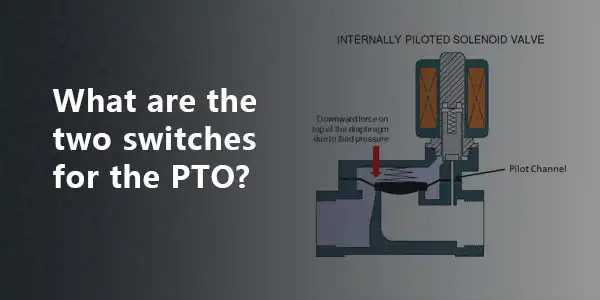Why Are There Two Switches for The PTO?
The power take-off is generally a vehicle stop switch. In order to ensure the correct operation of the power take-off, two switches are set. There are two switches that need to be put into gear, one is to take power from neutral, and the other is to take power from the top pump.
When using driving power take-off, make the vehicle in the low-gear zone and drive slowly, then place the joystick in the low-gear neutral zone, put the transmission in the required gear, and the power take-off will enter the working state at this time. And the vehicle can still run normally.
When using the parking power take-off, put the transmission joystick in the low-gear neutral position, open the solenoid valve of the power take-off, and connect the power take-off to work. Put the transmission in the required gear (only in the low gear area), and the power take-off will work in gear at this time, and the whole vehicle will not move.
Two PTO Switches and two pneumatic solenoid valves control the above two states. During operation, it is not only easy to press the two switches at the same time by mistake, causing the two pneumatic solenoid valves to work at the same time, resulting in the piston of the full power take-off not moving, the full power take-off cannot work normally, and there is also the defect that when one of the switches is pressed, the other switch must be turned off, otherwise, the piston cannot work normally.
Introduction of power take-off
A power take off (Power Take Off, abbreviated as PTO) is one or more sets of transmission gears, also known as a power output device, which is generally composed of a gearbox, a clutch, and a controller, and is output with the low-end gear or auxiliary box of the gearbox. Shaft connection to output power to external working devices, such as lift pumps, etc.
The power take-off is to output the power to the external working device. The principle is that the power is taken out from the extended intermediate shaft of the transmission by the hollow shaft of the power take-off, and transmitted to the input gear through the meshing gear sleeve, and then the power is output through the output gear shaft, and the output flange. The power take-off is operated by one-way air, and the combined teeth of the input gear and the meshing sleeve are all inverted bevel teeth, which can play the role of anti-off gear.
Classification of power take-off
Power take-offs are divided into mechanical control, hydraulic control, air control, vacuum source control, electric control and other operating methods, among which air control is relatively common; according to different power output forms, it can usually be divided into transmission side power output form, transmission The front power output form, the transmission rear power output form, and the engine front power output form.
 Track Your Order
Track Your Order




